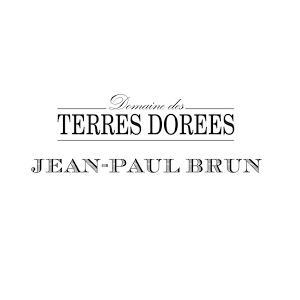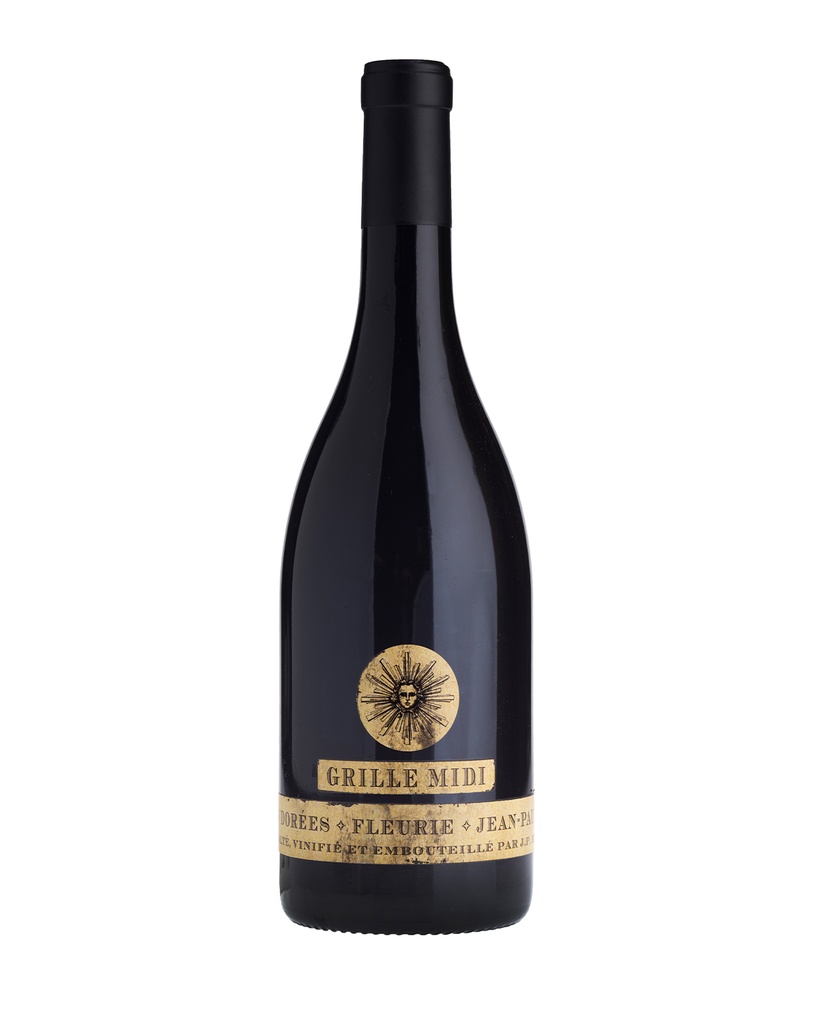Fleurie Grille Midi
We only use the “Grille Midi” name for this very old vine red wine from Beaujolais (France). Records show that the vineyard was planted from 1947 t o 1955. The rootstock is the very hardy “vialla”, that is perfectly adapted to these very poor soils. Yields are very low, rarely going above 30 hl/ha. This Burgundian vinified wine carries with it the minerality, density, purity and elegance that are so specific to this famous terroir.
Winery

Jean-Paul Brun started Terres Dorées in 1979 with a mere 4 hectares of vines in Charnay in the southern Beaujolais, an area which is slightly warmer and more limestone-driven versus the more renowned granite-rich cru villages in the northern Beaujolais. Today, the Charnay estate is around 30 acres, but with an additional 15 hectares farmed in the crus. The farming in Charnay is organic and includes working of the soils; the cru parcels are farmed sustainably and the soils are not worked. Harvest is by hand and of well-ripened but not over-ripened fruit, so alcohol levels are generally modest.
Annual Terres Dorées production is around 350,000 bottles, 85-90% of it from estate fruit with the rest of it sourced. From the beginning, Jean-Paul carved a different path for himself in Beaujolais. Not only does he not chaptalize (common practice here), he has also always eschewed the relatively modern technique of carbonic maceration, in favor of traditional Burgundian vinification. He believes the fruit is best expressed by the grapes’ indigenous yeasts, rather than by adding industrial yeast. Brun’s view is that Beaujolais drinks best at a lower degree of alcohol and that there is no need to add sugar.
We only use the “Grille Midi” name for this very old vine gamay red wine from Beaujolais (France). Records show that the vineyard was planted from 1947 to 1955 and it is considered the best vineyard in Fleurie. The rootstock is the very hardy “vialla” perfectly adapted to the very poor soils. Yields are low, rarely going above 30 hl/ha. This Burgundian vinified wine expresses minerality, density, purity, and elegance that is so specific to this famous terroir, with aromas of ripe blackberries and plums that lead to a palate that is full-bodied and bursting with round tannins leading into a long and lingering finish. Fleurie Grille Midi from Domaine des Terres Dorées pairs well with duck dishes, white meats, mushrooms, grilled meats, and a variety of cheeses. Available for deliveries within Metro Manila.
Grape Variety / Blend: Gamay
Winery / Estate: Domaine des Terres Dorées
Specifications
| Basic | |
|---|---|
| Vintage | 2018 or 2021 |
| Product-Type | Wine |
| Type | red |
| Price Point | 2,001 and above |
| Style | Light |
| Blend/Grape Variety | gamay |
| Volume | 750 ml |
| Alcohol | 12.50% |
| Terroir | |
|---|---|
| Country | France |
| Region | Beaujolais |
| Estate | Domaine des Terres Dorées |
| Appellation | Beaujolais AOP |
| Fermentation | Natural |
| Wine-Making Process | Sustainable |

To install this Web App in your iPhone/iPad press
![]() and then Add to Home Screen.
and then Add to Home Screen.

